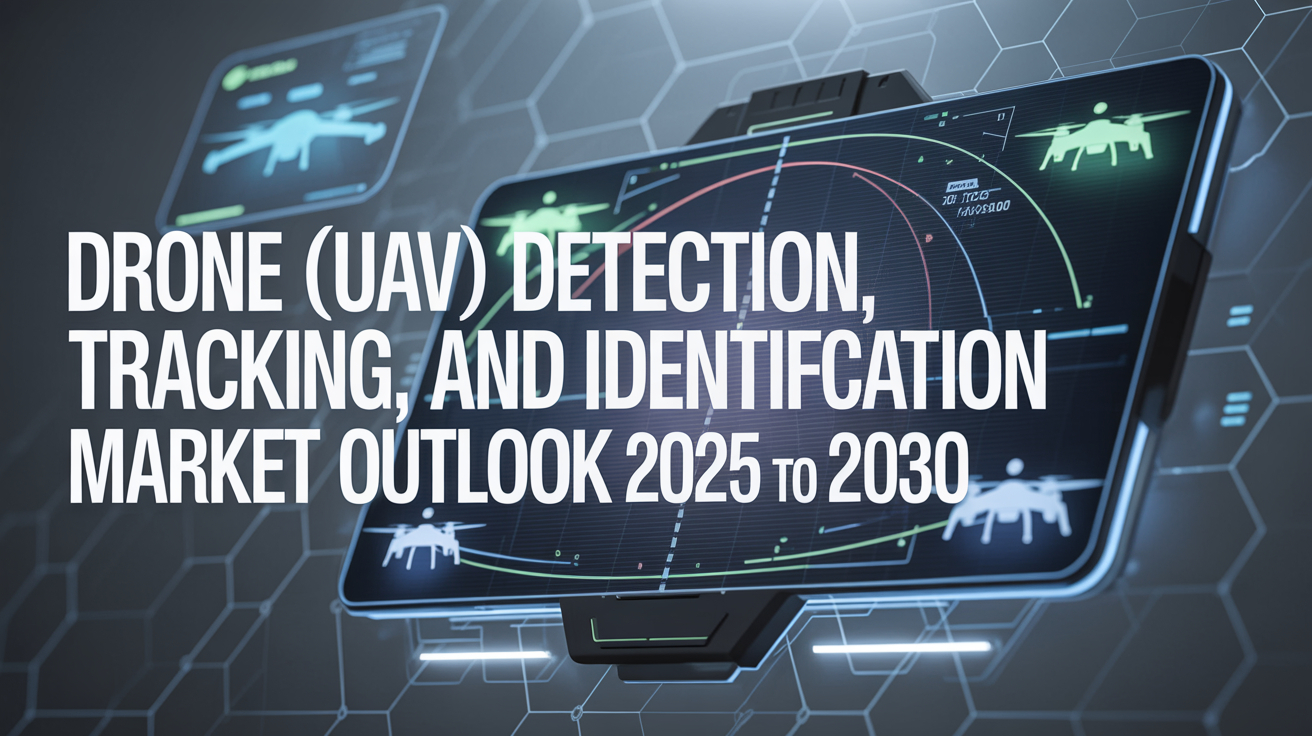The Global Drone Detection Market continues to expand rapidly as the rise of unmanned aerial vehicles reshapes security operations worldwide. Valued at USD 659.4 million in 2024, the market is projected to reach USD 2,329.9 million by 2029, registering a CAGR of 28.7%. Drone detection systems now serve as an essential part of global airspace defense strategies, helping governments, militaries, and private organizations detect and neutralize unauthorized drones before they pose threats.
Download PDF Brochure: https://www.marketsandmarkets.com/pdfdownloadNew.asp?id=199519485
Growing Need for Advanced Drone Detection Systems
The growing prevalence of drones in surveillance, logistics, and defense applications has led to increased risks of intrusion, espionage, and airspace violations. Drone detection systems enable authorities to track flight paths, analyze drone behavior, and respond in real time. In 2024, the defense sector dominated global adoption, accounting for nearly 79 percent of the total market. Governments and law enforcement agencies contributed 14 percent, primarily using detection networks for crowd management, border monitoring, and event security. The remaining 7 percent of demand came from airport operators, power utilities, and data centers that require protection from unauthorized aerial incursions.

Regional Insights and Market Distribution
North America represents the largest regional market, holding 55 percent of global revenue due to strong defense expenditure and early deployment of counter UAS solutions. Europe follows with a 22 percent share, driven by civil integration of airspace security technologies. The Asia Pacific region, with 13 percent of the total market, is expected to experience the fastest growth as countries like India, Japan, and South Korea prioritize investments in drone detection and tracking systems for border defense and urban security.
Rising Applications of Drone Detection Technologies
The global Drone Detection Market is evolving beyond traditional defense uses to encompass a wide range of civil and commercial applications. Airports increasingly rely on detection networks to prevent flight disruptions and enhance passenger safety. Ports, oil facilities, and energy sites deploy these systems to maintain secure perimeters. The integration of radar, radio frequency sensors, electro optical cameras, and acoustic technologies provides comprehensive airspace monitoring. Artificial intelligence is also being adopted to classify drone types, predict flight patterns, and improve detection accuracy across complex environments.
Market Opportunities and Industry Expansion
In the near term, the market is driven by the urgency to protect sensitive zones such as military installations, airports, and borders from drone threats. Nations are accelerating procurement programs for advanced counter UAS systems capable of rapid threat assessment. Portable detection units are being used in field operations for tactical monitoring and situational awareness.
In the long term, opportunities will expand across civilian infrastructure. Hospitals, prisons, and educational campuses are exploring drone detection solutions to enhance safety and prevent privacy violations. The emerging Urban Air Mobility and Unmanned Traffic Management sectors will also depend on detection frameworks to safely coordinate air traffic and prevent collisions between drones and crewed aircraft.
Competitive Landscape and Key Market Players
The Drone Detection Market features a dynamic mix of radar manufacturers, system integrators, and technology innovators. Leading companies such as Thales, Hensoldt, Blighter Surveillance Systems, DeTect, Lockheed Martin, and Israel Aerospace Industries are advancing radar technologies capable of identifying small, fast moving drones with precision. These systems form the backbone of integrated detection architectures that support long range airspace surveillance.
Solution providers like BAE Systems, Rafael, and Indra are offering comprehensive anti drone solutions that merge radar, optical sensors, and AI analytics under unified control platforms. Companies such as Dedrone and Fortem Technologies continue to develop modular systems that can be easily deployed across defense and commercial environments, enhancing scalability and cost efficiency.
Diverse Applications Across Market Segments
The demand for drone detection systems spans multiple industries and operational settings. In defense, these solutions ensure border protection, battlefield awareness, and airbase security. Government agencies utilize detection networks to enhance public safety and manage high risk events. Commercial sectors such as airports, oil refineries, and telecommunications infrastructure rely on detection technologies to safeguard assets and maintain operational continuity. The growing integration of AI driven analytics enables these systems to adapt to evolving threats and provide actionable intelligence in real time.
Technological Innovation and Integration Trends
Continuous innovation defines the current phase of the drone detection industry. AI based data processing, machine learning algorithms, and sensor fusion techniques are enhancing detection precision while reducing false positives. Integration with cybersecurity and network monitoring frameworks ensures broader situational awareness. The development of multi sensor systems capable of detecting, tracking, and classifying drones simultaneously is becoming a key differentiator among market leaders.
Collaborative Efforts and Standardization
Collaboration among defense agencies, private technology firms, and regulatory authorities is driving the creation of global standards for drone detection. Joint research initiatives and interoperability testing programs are helping align international airspace security protocols. These efforts are fostering smoother integration of detection systems across regions and promoting data sharing practices essential for coordinated counter UAS operations. The result is a more unified and responsive global airspace protection framework.
Future Outlook for the Drone Detection Industry
The future of the Drone Detection Market is defined by innovation and integration. As drone operations become more frequent across logistics, surveillance, and defense, reliable detection and identification systems will be critical for safety and compliance. Governments are strengthening regulations that mandate drone detection infrastructure for airports and critical facilities. Industry leaders are focusing on AI enabled data analysis, cloud based command centers, and modular architectures that allow rapid scalability. By 2029, drone detection systems are expected to become standard components of global airspace security networks, ensuring real time protection and operational resilience across all sectors.
Related Reports:
Drone (UAV) Detection, Tracking, and Identification Market by Technology (Radar, RF Scanner, Optical), Application (Critical Infrastructure, Airport, Stadium, Prison, Power Plant, Oil & Gas, Border Security, Military), Type (Ground-Based, Handheld), Range and Region – Global Forecast to 2029
